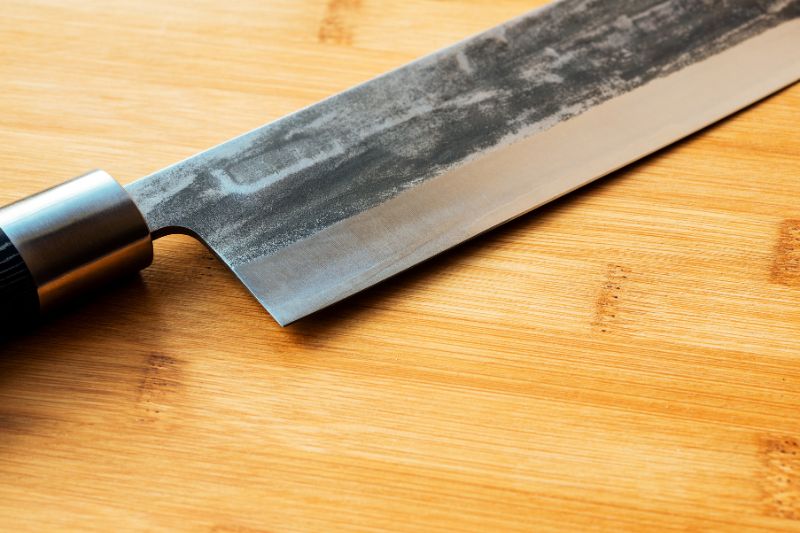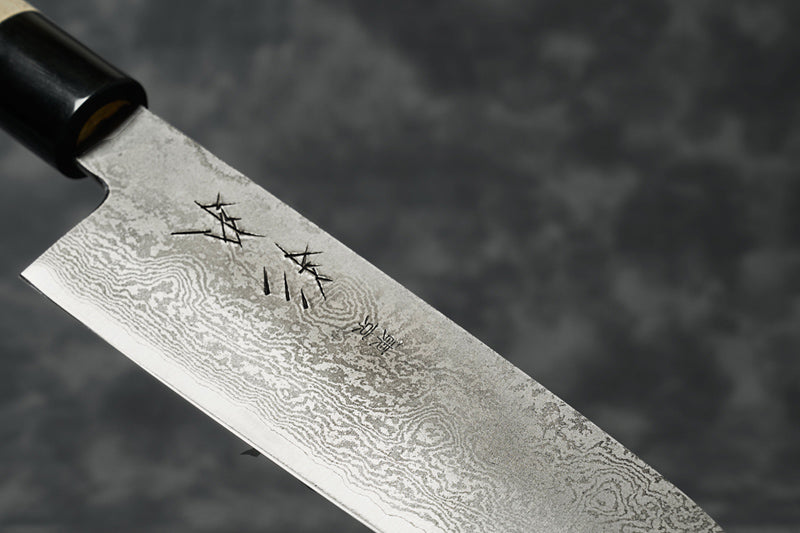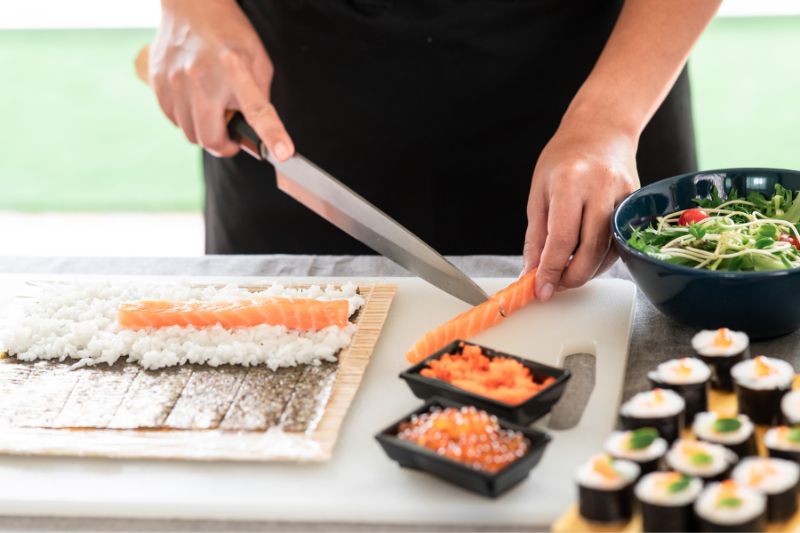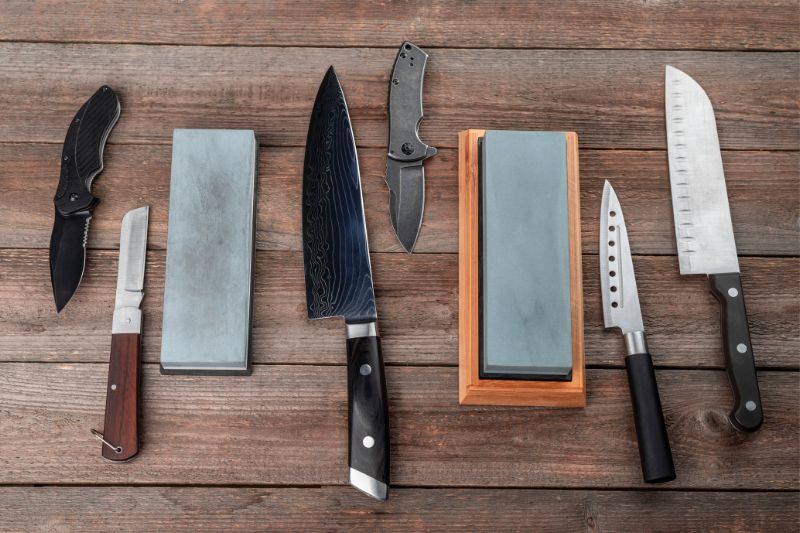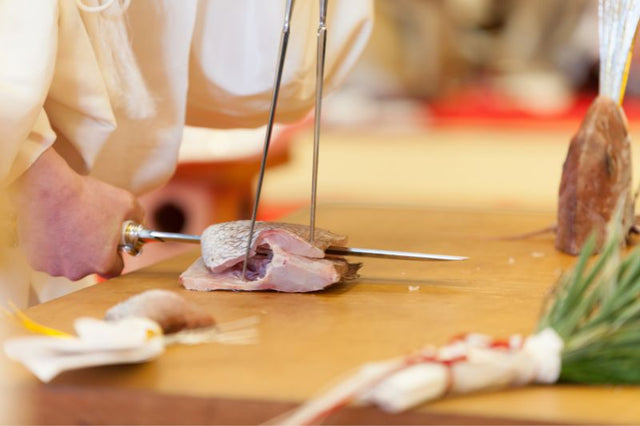Choosing your first Japanese knife can be an exciting but challenging task. Japanese knives are renowned for their craftsmanship, sharpness, and versatility. Here are the things to consider when selecting your first Japanese knife:
1. Your cooking purpose and knife type
Japanese knives come in various types, each designed for specific purposes. The three primary types are Gyuto (chef's knife), Santoku (all-purpose knife), and Nakiri (vegetable knife). Consider your cooking style and the tasks you commonly perform in the kitchen to determine which type suits you best.
2. Blade Material
Japanese knives are typically made of high-quality carbon steel or stainless steel. Carbon steel offers exceptional sharpness and edge retention but requires more maintenance to prevent rust. Stainless steel blades are easier to maintain and more corrosion-resistant but may be slightly less sharp.
Before going to #3, here are the advantages and disadvantages of these blade materials:
Carbon Steel
Pros:
- Exceptional Sharpness: Carbon steel blades can achieve razor-like sharpness, making them excellent for precise and clean cuts.
- Edge Retention: Carbon steel holds its edge for longer than stainless steel, reducing the need for frequent sharpening.
- Ease of Sharpening: Carbon steel is relatively easy to sharpen, allowing you to maintain its sharpness with minimal effort.
- Responsiveness: Carbon steel blades have good responsiveness, providing direct feedback to the user's hand movements.
Cons:
- Susceptible to Corrosion: Carbon steel is rust and corrosion-prone if not properly cared for. It requires regular maintenance, such as drying after use and oiling, to prevent oxidation.
- Staining: Certain foods, particularly acidic ingredients, can cause carbon steel blades to develop stains or patina, a natural darkening of the metal. While patina doesn't affect the performance, it may not be aesthetically appealing to some users.
- Reactive: Carbon steel can react with certain ingredients, altering their taste or appearance. For instance, cutting acidic fruits or vegetables may cause a metallic taste or discoloration.
Stainless Steel
Pros:
- Corrosion Resistance: Stainless steel is resistant to rust and corrosion, making it low-maintenance and suitable for users who prefer less upkeep.
- Stain Resistance: Unlike carbon steel, stainless steel is less prone to staining or developing patina, keeping the blade clean and shiny.
- Versatility: Stainless steel blades are less reactive and won't affect the taste or appearance of food, making them suitable for various ingredients.
- Durability: Stainless steel is generally more resistant to wear and chipping than carbon steel.
Cons:
- Lower Edge Retention: Stainless steel blades typically have slightly lower edge retention than carbon steel. These may require more frequent sharpening to maintain optimal sharpness.
- Harder to Sharpen: Stainless steel can be more challenging to sharpen due to its hardness. As a result, it may require specialized sharpening tools or professional services.
- Less Sharpness: While stainless steel blades can be sharp, they generally don't reach the same level of sharpness as carbon steel.
3. Blade Construction
Japanese knives can have different blade constructions, such as single bevel or double bevel. Single bevel knives, like Yanagiba or Deba, have a flat backside and a beveled front side, making them ideal for precise cuts. Double bevel knives, like Gyuto and Santoku, have beveled edges on both sides, providing versatility for both right- and left-handed users.
4. Blade Shape and Size
Consider the blade shape and size that will best suit your needs. For example, Japanese knives typically range from 150mm to 270mm. Longer blades are helpful for tasks like slicing and chopping, while shorter blades offer more control for intricate tasks.
5. Handle
Japanese knives traditionally come with either a Western-style handle (yo handle) or a Japanese-style handle (wa handle). Yo handles are often made of wood, plastic, or composite materials, while wa handles are typically made of hardwood. Choose the handle style that feels comfortable and secure in your hand.
6. Brand and Reputation
Research reputable Japanese knife brands that are known for their craftsmanship and quality. Reading reviews and seeking recommendations can help you make an informed decision.
7. Budget
Determine your budget range for a Japanese knife. Prices can vary significantly based on brand, materials, and craftsmanship. Therefore, balancing your budget and the desired quality is important.
8. Try Before You Buy
If you live in an area that sells Japanese knives locally, visit a specialty store that carries Japanese knives and try holding them to see how they feel in your hand. This can give you a better sense of the knife's weight, balance, and overall comfort.
Remember, choosing a knife is a personal decision, so take your time to research and consider your purpose, food to slice or chop, and preferences before purchasing.
Get Free Bonus Books

Sign up for free to the Japanese Knife Club to get advice and exclusive articles about how to choose Japanese Knives, and tips and tricks for using Japanese knives.
About the author
Kei Nishida
Author, CEO Dream of Japan
Certification: PMP, BS in Computer Science
Education: Western Washington University
Kei Nishida is a passionate advocate of Japanese craftsmanship, a writer, and the founder and CEO of Japanese Knife Co., Japanese Green Tea Co., and Japanese Coffee Co., all part of Dream of Japan.
His journey began with a mission to introduce the world to the exquisite flavors of Japanese green tea. Through Japanese Green Tea Co., he pioneered the import of premium tea grown in nutrient-rich sugarcane soil, earning multiple Global Tea Champion awards. He then expanded into the world of coffee, launching Japanese Coffee Co., the first company to bring Sumiyaki charcoal-roasted coffee to a global audience.
With a deep appreciation for Japanese artistry and tradition, Kei turned his attention to one of Japan’s most revered crafts: bladesmithing. Through Japanese Knife Co., he made handcrafted katana-style knives, created by a renowned katana maker, available outside Japan for the first time. These exceptional knives embody centuries of samurai sword-making expertise, blending tradition with modern functionality for chefs and collectors alike.
Kei’s journey continues as he uncovers and shares Japan’s hidden treasures—one sip, one blade, and one legacy at a time.

